Over its long life, the Mediterranean superpower struck a wide array of silver ancient coins
Roman silver coins were produced in astonishing variety over a period of about 800 years. Considering the broad historical themes they represent, it’s no surprise they are among the most popular of all ancient coins.
Many collectors specialize in the silver coins of the Roman Republic or the Roman Empire, and such coins remain popular because they are relatively abundant and usually can be acquired for reasonable prices.
Over the course of eight centuries, Roman silver coins were struck in many different denominations. Assembling a collection of the principal denominations is a comparatively easy task, though it will require some searching for the scarcer pieces. Not included in the following survey are the very rare pieces that will not be encountered except by the most advanced collectors.
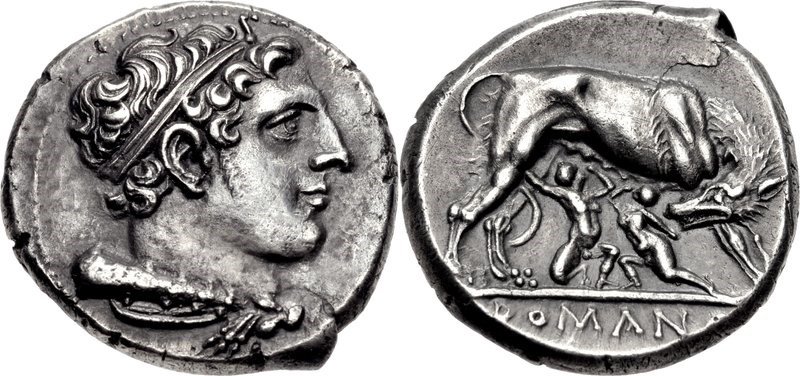
Didrachm of circa 275 to 255 BCE. It shows the head of Heracles and the she-wolf suckling Romulus and Remus. All images courtesy Classical Numismatic Group (CNG)
The first Roman silver coin likely was issued in 326 BCE (or as late as 270 BCE, depending on your perspective). The didrachm denomination was inspired by similar coins being issued at Greek cities in South Italy – though Rome’s pieces bore distinctly Roman designs. The earliest were struck at about 7.45 grams, and over the course of the next century their weight was reduced to a range of about 5.80 to 6.80 grams.
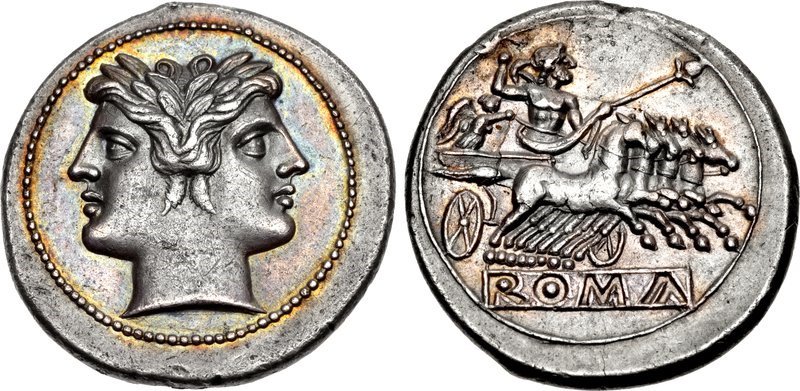
A quadrigatus
By the Second Punic War (218-201 BCE) the didrachm had been ‘replaced’ by the quadrigatus, which simply was a reduced-weight didrachm with a new design showing the janiform head of the Dioscuri, and Jupiter accompanied by Victory in a four-horse chariot (a quadriga).
Fractional denominations of didrachms and quadrigati were struck, with the former being very rare and the latter being only rare.
Starting in 212/211 BCE (though, again, theories vary on the exact date), the quadrigatus coinage was replaced by a smaller, lighter coin, the denarius. The earliest examples of these coins weigh about 4.1-4.4 grams, and sometime in the period 206-195 BCE, the weights dropped to as low as about 3.5 grams.
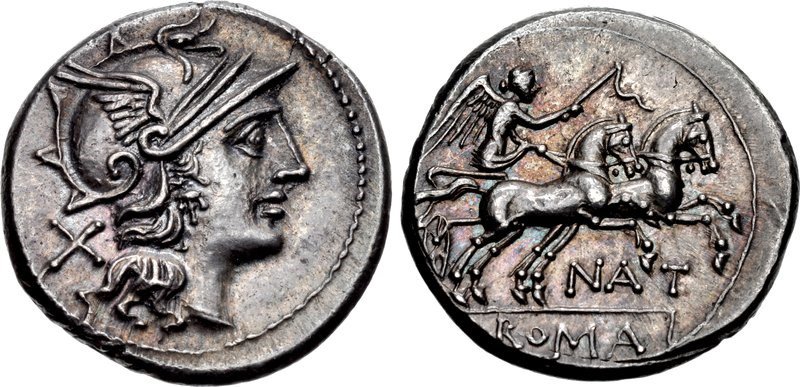
A denarius of c.155 BCE issued by the moneyer Pinarius Nata

A denarius of the emperor Marcus Aurelius issued in 165 CE
The denarius proved to be Rome’s most important and enduring silver coin, being struck from the Second Punic War through the mid-second century of the Common Era. Shown above are examples from the Republic and the Empire.
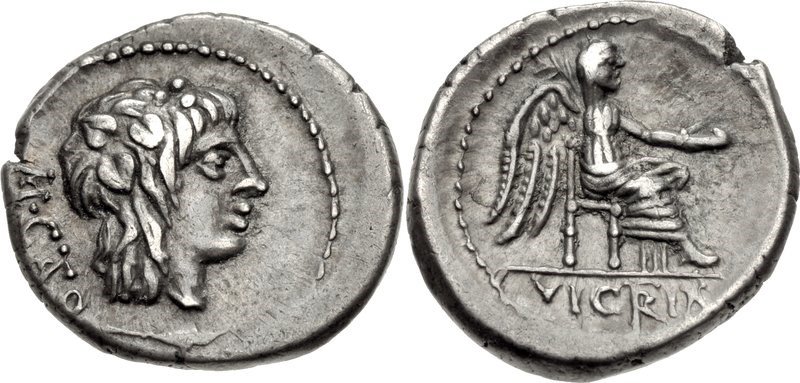
A quinarius of the moneyer M. Cato issued c.89 BCE

A quinarius of the emperor Domitian issued in 88 CE for the Secular Games (Ludi Saeculares)
A half-denarius – the quinarius – was also struck, though never in the same quantities as the denarius. It started as a legitimate circulation coin, but by imperial times it had become largely a ceremonial piece issued in small quantities. Shown above are examples from the Republic and the Empire.
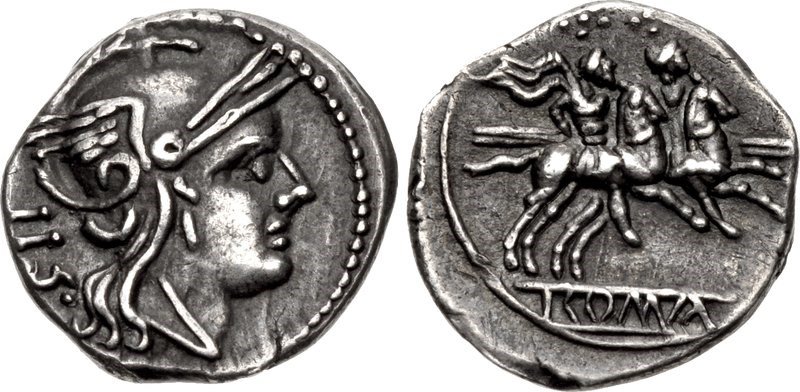
A silver sestertius issued c.211-208 BCE

A bronze sestertius issued in 247 CE by the emperor Philip II
Also produced was a one-fourth denarius – the sestertius. This tiny silver coin was never struck in significant quantities, and unlike the denarius and the quinarius, it did not survive into imperial times as a silver coin. Instead, it was retained as a large brass or bronze coin. Shown above are examples of the silver Republican piece and the bronze imperial coin.
An unusual coin of the Roman Republic was the Victoriatus, which was struck at about 3.25 grams (though, in practice, the weights vary considerably). The date of its introduction is much debated, but it seems to have been about when the denarius and its fractions came into being. Very rare half-Victoriati also were struck.
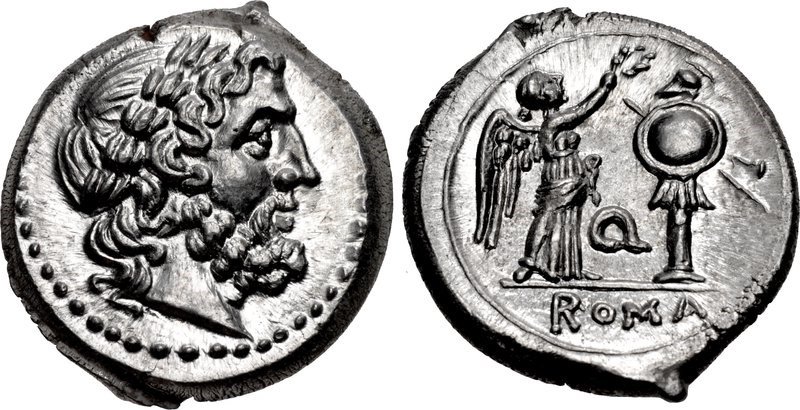
A Victoriatus issued c.211-210 BCE
These coins seem to have been struck for the ‘provincial’ areas of the Roman world, being intended for the Greek and Celtic populations.
The denarius remained the unrivaled workhorse of Roman silver coinage until about 214 CE when the emperor Caracalla (198 to 217 CE) introduced the double-denarius, a coin usually called an antoninianus. Theoretically it was tariffed at two denarii, but it contained only about 1.5 times the silver content.
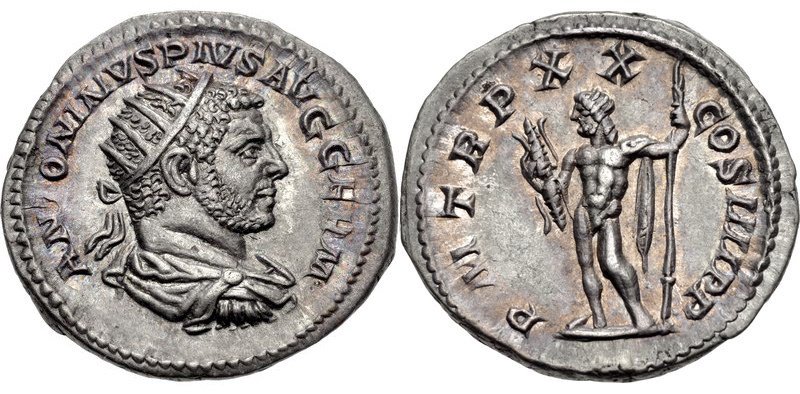
A double-denarius of the emperor Caracalla, struck in 217 CE.
It took about 25 years for the double-denarius to displace the denarius. The last ‘regular’ issue of denarii was struck in 240 by the emperor Gordian III (238 to 244 CE), after which denarii were struck only for ceremonial functions.
By the late 250s, coins of reasonable silver content ceased to be issued, and it wasn’t until about 294 that another Roman coin of good silver – the argenteus – was introduced by the emperor Diocletian (284 to 305 CE). At a theoretical weight of about 3.40 grams, it was the same weight and high purity as had been denarii of the emperor Nero (54 to 68 CE).
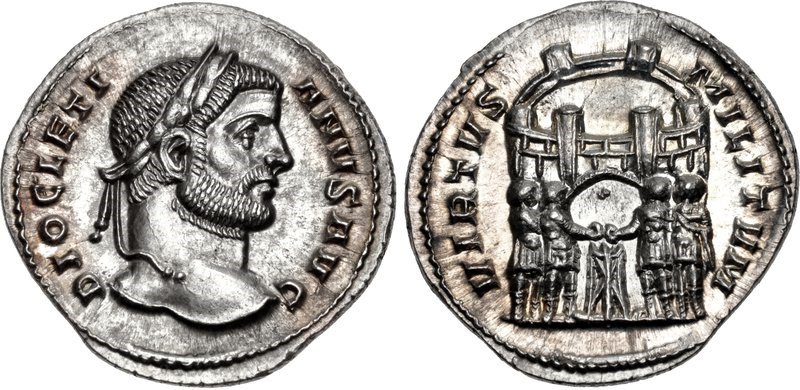
An argenteus of the emperor Diocletian, issued c.295 CE
But in the inflationary economy of Diocletian’s time, a coin of this purity was doomed to fail. They were hoarded or exported long before they had the chance to circulate – hence most argentii are in nearly mint condition.
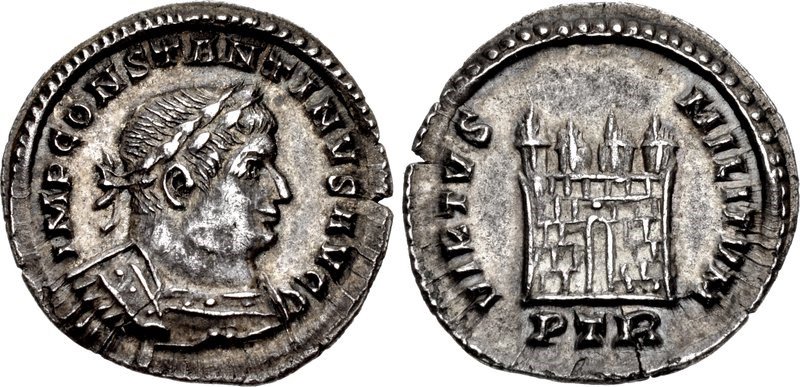
A half-argenteus of the emperor Constantine I (“The Great”), issued c.308-313 CE
A half-denomination of the argenteus also was struck, though these are quite scarce. One is illustrated above.
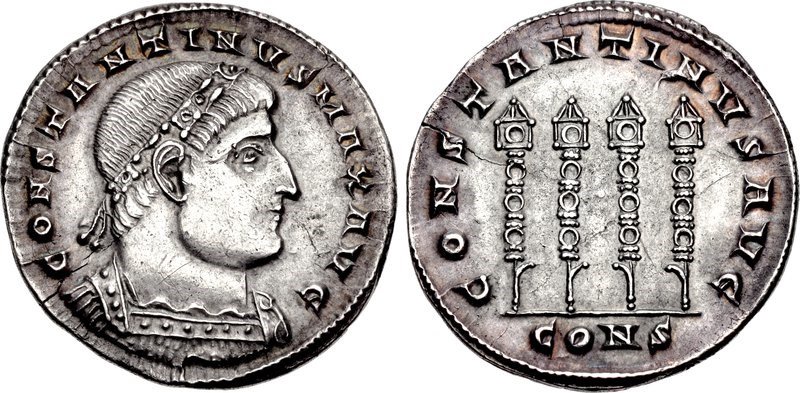
A miliarense of the emperor Constantine the Great, issued in 335 CE
During the next era of Roman history, the age of Constantine I “the Great” (307 to 337 CE) and his family, the argenteus was replaced by new issues, the miliarense and the siliqua. Introduced in about 324 CE, the miliarense (or miliarensis) was a heavy coin weighing between about 3.90 and 5.70 grams. It is considered to have been largely a ceremonial coinage, though it often entered general circulation.
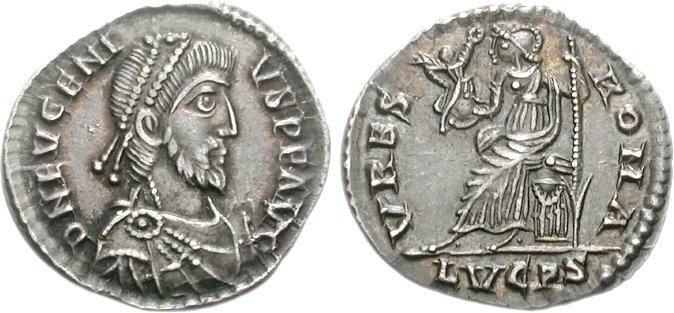
A siliqua of the rebel-emperor Eugenius, 392 to 394 CE
The more commonly struck coin was the siliqua, also introduced in about 324, with theoretical weights of 3.40 and 2.30 grams (for the heavy and light versions, respectively). As the workhorse of Roman silver coinage, it was the successor to the denarius and the argenteus, and it fulfilled its commercial role for nearly 150 years before the collapse of the Roman Empire.

A half-siliqua issued by the emperor Arcadius in 402 CE
Also produced, though in small quantities, was the half-siliqua. Usually, these were struck in the western half of the empire during the fifth century CE. Finding a pleasant, well-struck example is no easy task.




